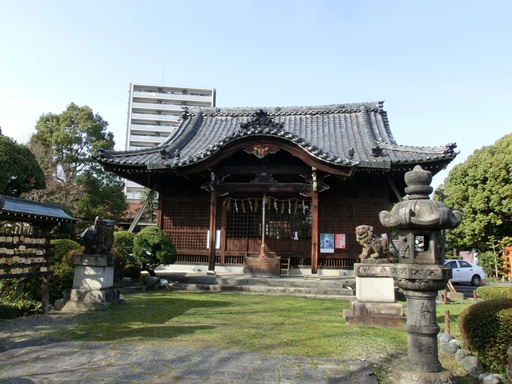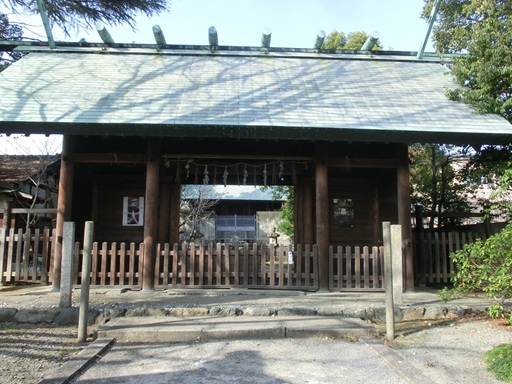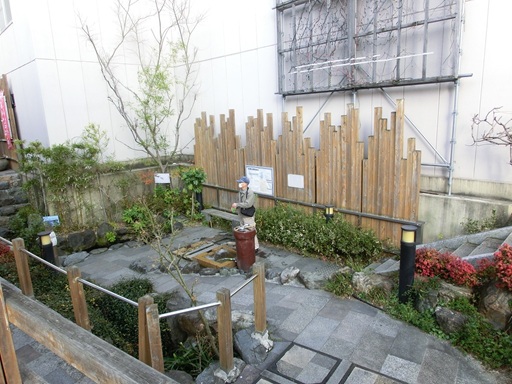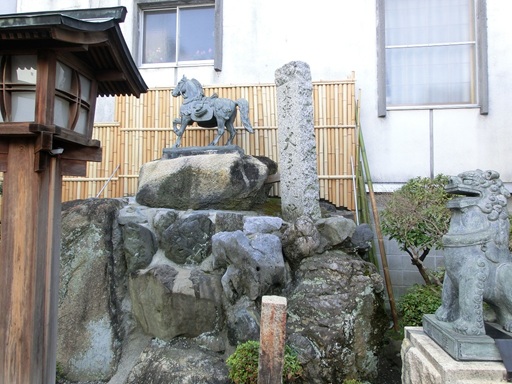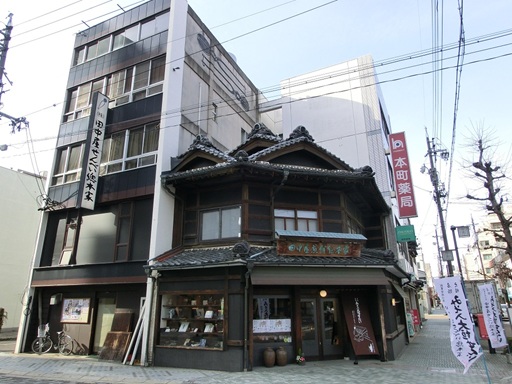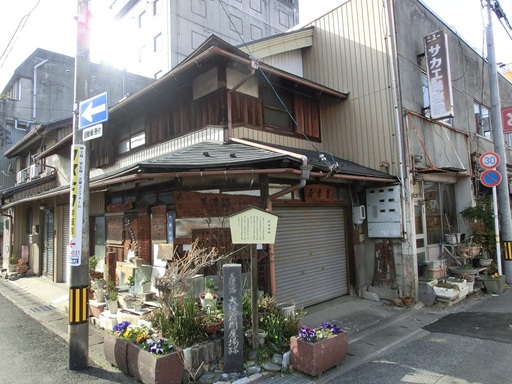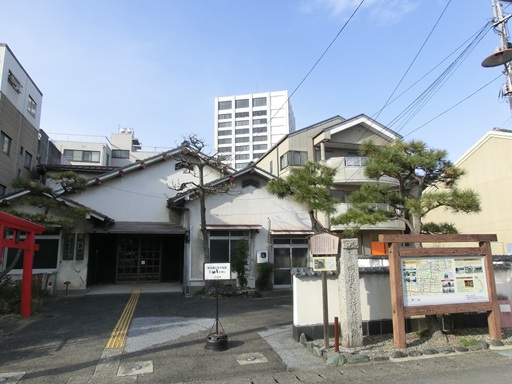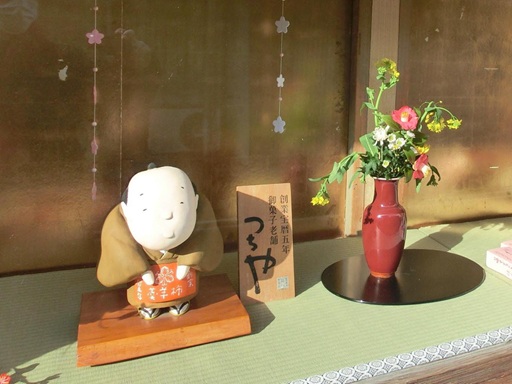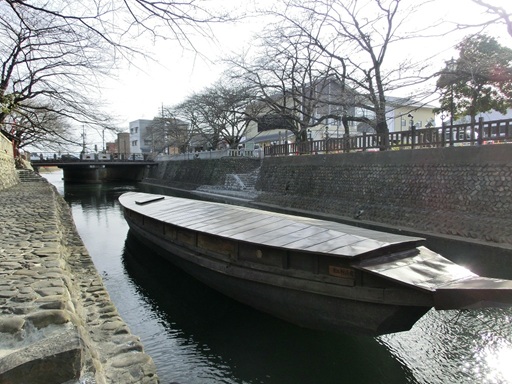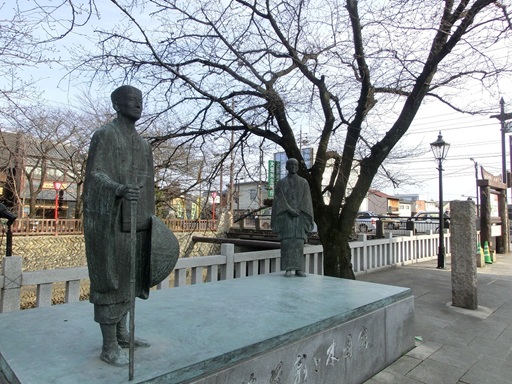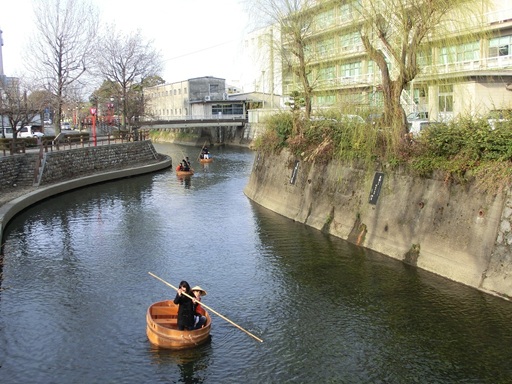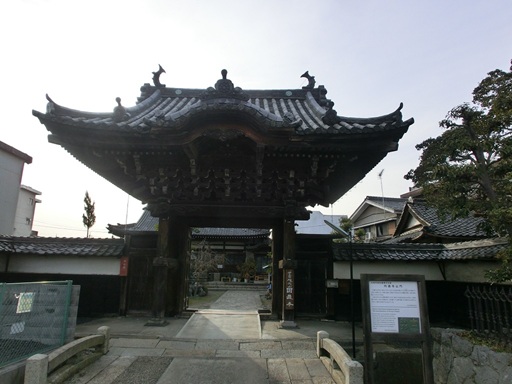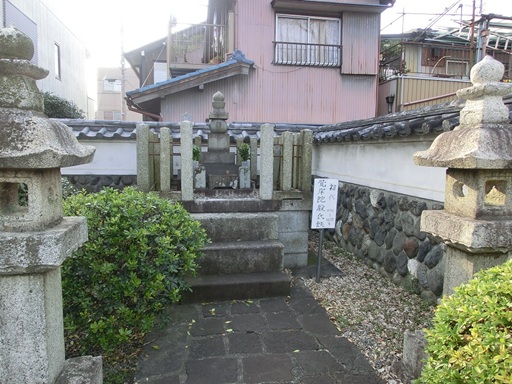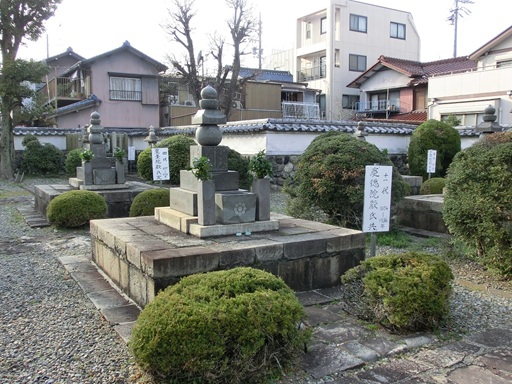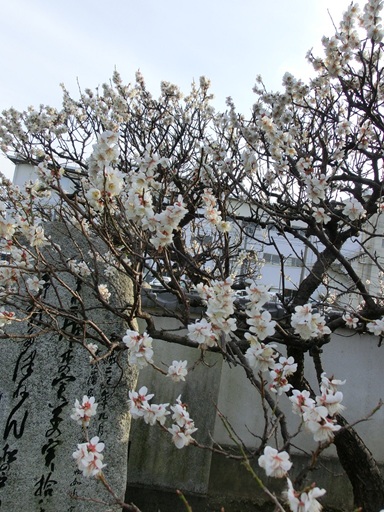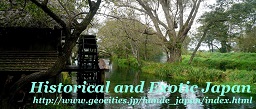|
Castle Town, Ohgaki in Gifu Prefecture
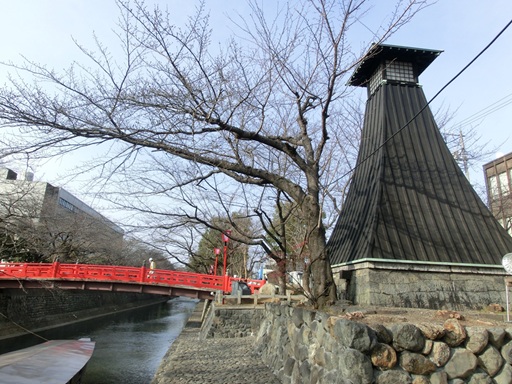
Ohgaki is located in the northern part of the Nobi Plain and is the second largest city in Gifu Prefecture. The downtown area of Ohgaki City is surrounded by the Ibi River and its tributary, the Kuise River. During the Edo Age (1603 - 1868) , Ohgaki was the capital of the Ohgaki Feudal Domain, and also a post town on the Mino Kaido road.In the middle of the city, the ruins of Ohgaki Castle are located. Please refer the page of "Ruins of Ohgaki Castle": http://cf916626.cloudfree.jp/HandE_Japan/TravelDestinations/Chubu/OhgakiCastle_E.html 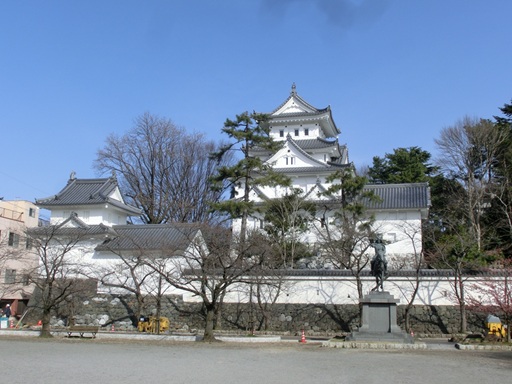
In the Edo Age, Ohgaki Castle had the main bailey and the second bailey, connected north and south in the center, surrounded by multi-layered baileys. Today, only the main bailey remains. The plaza, west of the main bailey, is the former site of the inner moat and the third bailey. There are two shrines in the west plaza. |
